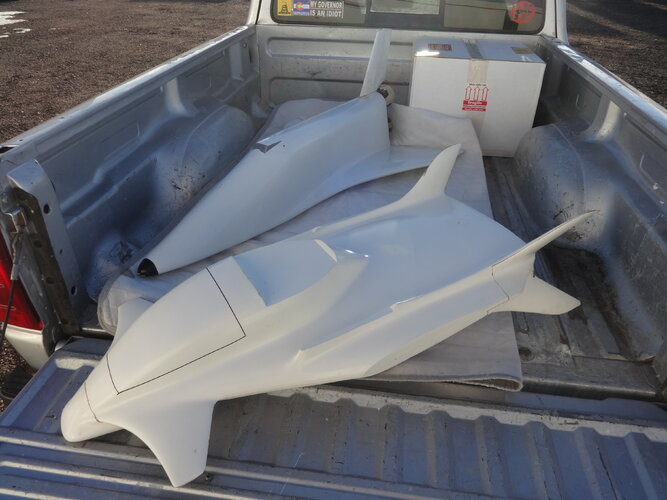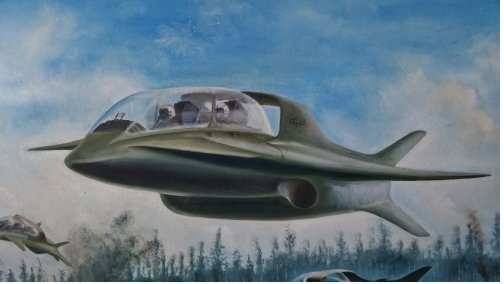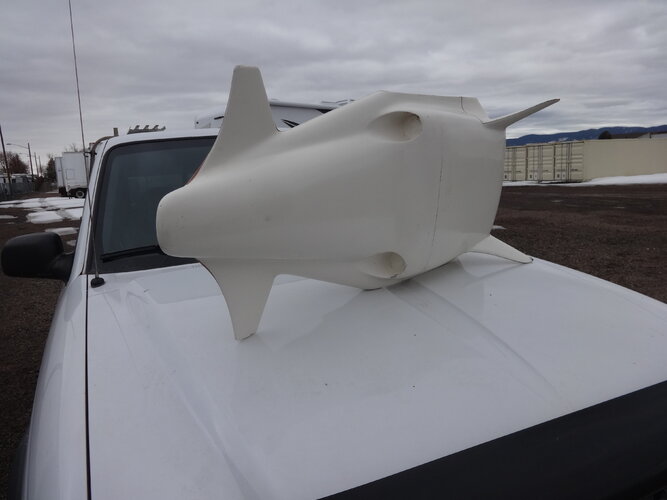Kiwis design a tank-killer for farmers
NEW ZEALAND, better known for lamb chops, is dabbling in combat aircraft design. The IML Group Project AX combines the not-too-dissimilar roles of crop dusting and ground attack in a package defined by the twin tenets of Enclosed Volume Utilisation (EVU) and Combat Sensitivity (CS). IML Group is a 12-man consultancy more usually employed on livery design, homebuilt aircraft, and planning work for automotive and aerospace companies. Project AX is the brainchild of Dave Williams, an ex-de Havilland Hatfield apprentice. According to Williams, the "classical" aeroplane layout—slender cylindrical fuselage and discrete wing— makes inefficient use of the volume enclosed by span, length, and height. Project AX, with a broad lifting fuselage, offers a high EVU. Upper-surface blowing and circulation control over wing and fuselage provide high lift. Combat Sensitivity is the vulnerability of a design to that "golden bullet' which ruins the pilot's chances of completing his mission. The F-14, F-15, and even the A-10 are Combat Sensitive, says Williams, with either the radar or the cannon essential to the mission vulnerable to enemy fire. To minimise AX CS, vital components are dispersed about the airframe —main armament is eight Oerlikon KCA 30mm cannon arranged in the nose so that one shell will not disable all firepower. The powerplant installation above the fuselage is shielded from ground fire. Project AX is available in a multitude of versions. The turbofan powered military AXM is available with paired Rolls-Royce Speys, Garrett AirResearch ATF3s, General Electric TF34s, or Pratt & Whitney F100s (hopefully unreheated). The turboprop-powered agricultural AXA is available with a single Pratt & Whitney PW120, Garrett AiResearch TPE331, or Rolls-Royce Dart. Soviet turbofan and turboprop installations are on offer. Powered by two ll,000lb-thrust Speys, AXM has a 14,200lb empty weight and a 40,500lb maximum takeoff weight with 11,000lb of fuel and 15,00lb of ordnance. Spey-powered AXM has a 430kt maximum level speed and a 300 n.m. close-air-support combat radius. Armament includes six or eight forward-firing 30mm KCAs—total firepower 10,800 rounds a minute—and six or eight 0-5in machine guns firing rearwards and downwards from a ventral location. The internal weapons bay can carry 20 500lb bombs. For comparison, the PW120-powered AXA weighs in at 7,000lb empty and 24,500lb fully loaded, with 6,200lb of fuel and 11,300lb of chemicals. The 2,100 s.h.p. turboprop propels AXA to 260kt and 650 n.m. radius. How serious is all this? Private venture work began in 1980 and IML intends to sell AX development rights to a prime contractor able to muster the estimated $25,220,000 required, hopefully before the end of 1982. IML reports great interest, with submissions and comments from Governments in the Middle East, Europe, and Asia. Interested, at an estimated flyaway cost of $2-7 million apiece? Then write to Dave Williams, IML Group Aerospace Products Division, PO Box 1202, Gisborne, New Zealand.
























